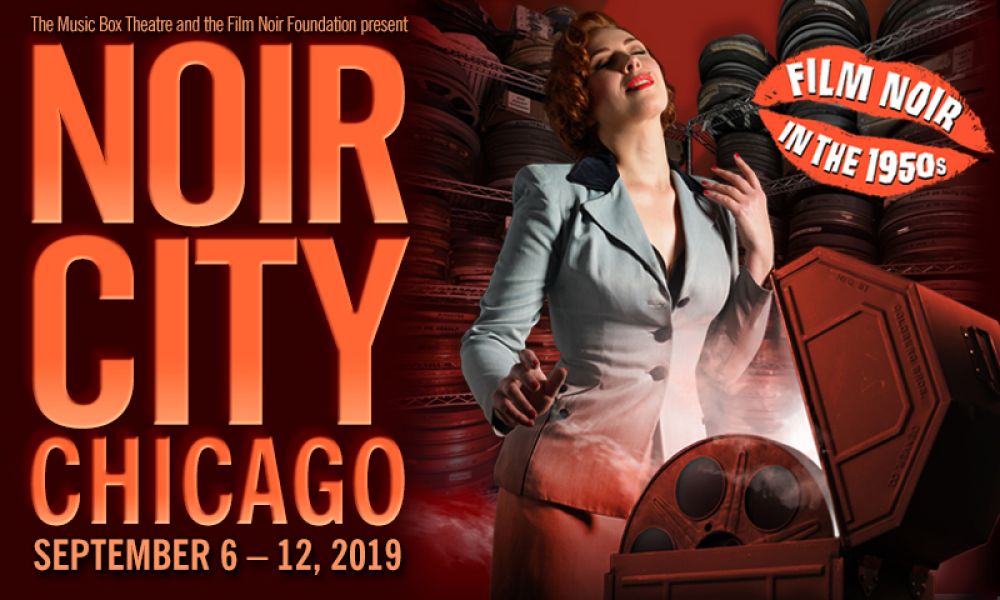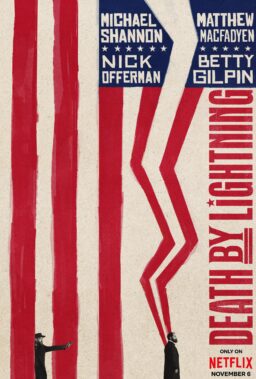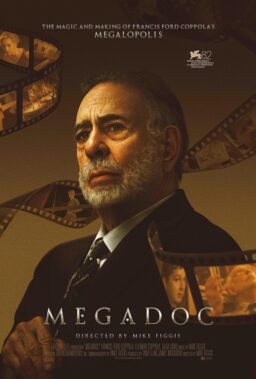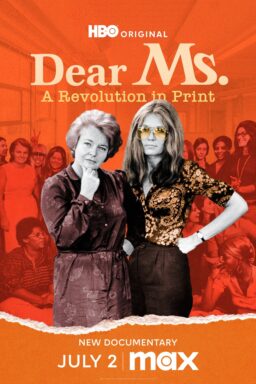The titles telegraph the story: “Trapped,” “Appointment With Danger,” “Sudden Fear,” “Odds Against Tomorrow.” The end of summer approaches, and with it, autumn leaves start to fall—which means it’s time for the annual cinematic wallow known as Noir City: Chicago.
The traveling film festival, presented by the San Francisco-based Film Noir Foundation, with sponsorship from Turner Classic Movies’ weekly “Noir Alley” showcase, returns to the Music Box Theatre, 3733 N. Southport, for its 11th annual weeklong run, beginning Sept. 6 and ending Sept. 12. This year’s theme is “Noir in the ’50s,” with 18 classics of the genre, such as “In a Lonely Place” and “Touch of Evil,” to overlooked gems such as “Trapped” and “Private Hell 36.”
As usual, the festival’s expert curators are Eddie Muller, a.k.a. “The Czar of Noir” and the host of TCM’s “Noir Alley,” and his partner in cinematic appreciation, writer and film historian Alan K. Rode. Known worldwide as ambassadors of noir, both Muller and Rode will introduce films at the Music Box.
Past Noir City lineups have explored foreign noir, noir in color, heist noir and most recently, ’40s noir, so this year’s theme is a natural progression. “We did well with ’40s noir, and the idea of showing films in chronological order gave us a better understanding of the noir movement,” Muller said. “Also, it’s interesting to see how Hollywood changes in ’50s. The studios continue to produce the genre, then they start to react to the rise of television, as more indie films are inspired by noir of the ’40s. It’s an amazing progression.”
“The ’50s were a different time,” Rode said. “You could say it was a noir noir noir world. The movies we’re showing are emblematic of this. If you look at noir as a post-World War II movement, you realize a lot took root in the ’50s, and the changes going on in the United States had a big effect on the style and themes of these movies. The Andy Hardy escapism of Hollywood begins to disappear, and then you have the Red Scare, Cold War politics, HUAC—the film noir movement really reflected that. Noir came into full flower by the early ’50s, then it diffused. Some would say it morphed into television programming.”
Of course, some purists argue that noir as a movement had ended by the Eisenhower administration. “Yes, there are fewer films that fit the bill, but it’s fascinating to see directors like Stanley Kubrick and Paul Wendkos adapting noir for the ’50s,” Muller said. “The goal is to stir things up a bit. The fact that we debate what noir is is what makes it so vital. There’s no question that the ’40s are high point of noir. But it’s interesting to see how it shows up in the ’50s as sometimes the same but yet often different.”
Once again, almost all films will be screened in 35mm. With the primacy of digital projection, “it’s getting harder all the time to show film,” Muller said. “There’s no way around that. For instance, we’re showing ‘Pickup on South Street’ in a DCP, because Fox won’t give us film anymore. Warner Bros. is the same. That’s not so for Columbia/Sony or Universal, they’re the best.”
What Muller enjoys the most about this lineup is “how it changes almost radically throughout the run,” he said. “It’s a slightly abbreviated version of the San Francisco Noir City program, where we got to color outside the lines a bit more, like when we showed a double bill of ‘Breathless’ and ‘Psycho.’ It was 1960, and the movies would never be the same.”
The following is the festival’s lineup, with comments by Muller and Rode:
Friday, September 6

“In a Lonely Place” (1950), 7 p.m. Director Nicholas Ray’s masterpiece of alienation and self-destruction could be “the noir of all noirs,” Muller said. “It’s my favorite film of all time, just not noir. I don’t need any excuse to show it, and amazingly, we haven’t shown it before in Chicago.”
With a dream team of Humphrey Bogart and Gloria Grahame, “In a Lonely Place” transforms what could have been a mere murder mystery into something much more profound. “It’s Bogie in his best role,” Muller said. “He deserved the Oscar for this one, not for ‘The African Queen.’ I have it from his son that when the movie is in its most revelatory passages, he’s playing himself, for better or worse. That’s what drew him to this project. And it was his project. He bought the rights to the book, and Columbia agreed to distribute. He wanted to make another film with Nick Ray after ‘Knock on Any Door.’ Bogie really enjoyed Ray, because he was an actor’s director. And Bogie had worked with many who were not.”
Rode calls “In a Lonely Place” “an epic noir in terms of how it has become better appreciated over time. Plus, Gloria Grahame gives the performance of her career”—even though she was in the process of divorcing Nick Ray at the time. “Her contract stipulated that she had to obey the director. Maybe that’s one reason Bogie wanted Ginger Rogers for the part. Thank goodness cooler heads prevailed.”
“The File on Thelma Jordon” (1950), 9:30 p.m. It’s a tale of pure noir: a femme fatale (Barbara Stanwyck) lures an assistant district attorney (Wendell Corey) into covering up her seemingly criminal tracks. Directed by Robert Siodmak, “a crucial noir stylist,” according to Muller, “the film is one of his best and is rarely screened.” For years “Thelma” could be seen only in public-domain copies, so Muller is thrilled that Paramount finally has a 35mm print. “It’s Stanwyck, a great script by Ketti Frings [a Pulitzer Prize winner in 1958], and all in all, a very underrated movie.”
Rode also touts “Thelma” as an overlooked gem from Siodmak, director of the canonical noirs “The Killers” (1946) and “Criss Cross” (1949). He also salutes Wendell Corey, then part of producer Hal Wallis’ stock company (including Kirk Douglas, Burt Lancaster and Lizabeth Scott, Wallis’ mistress). Wait, wasn’t Scott known as a hitter for the other team? Maybe not. Rode recalled a Shirley MacLaine anecdote, delivered at a TCM Classic Film Festival screening, about how Liz and Hal would engage loudly in extramarital activities in the trailer next to hers.
But back to the film. “You’ve got Barbara Stanwyck at her most duplicitous,” Rode said. “What could be more noir than Barbara Stanwyck getting a district attorney into trouble?”
Saturday, September 7

“Trapped” (1949), 2:30 p.m. Richard Fleischer’s “Trapped,” screening in a newly restored print funded by the Film Noir Foundation, represents the lost chapter of the many noir films the director made at RKO. “Most of his early films were all noir; ‘Bodyguard,’ ‘The Narrow Margin,’ all were made at RKO,” Muller said. Fleischer made “Trapped” on a loan-out at the low-rent studio Eagle-Lion, and over time, “the film slipped between the cracks. Finding it has always been on our radar.” When the FNF couldn’t uncover any 35mm elements, it almost moved forward with a restoration from 16mm, “by literally enlarging every frame.” But the cost proved to be prohibitive. Then just weeks later, they learned of a collector with a 35mm print, which had been given to Harvard’s film archives. “They contacted UCLA, and that’s what was used as basis for the restoration.”
Studios like Eagle-Lion were squeezed out by the majors, which then had a stranglehold on theatrical exhibition. “‘T-Men’ was one of Eagle-Lion’s early successes,” Rode said. “‘Trapped’ is similar in plot, as it involves Treasury Department officials going undercover to find a counterfeiting ring. The acting is extraordinary, with a young Lloyd Bridges and Barbara Payton in her first major film role.” Though she’s remembered nowadays primarily for her sordid off-screen exploits, “she was a good actress,” Rode said. “You can see it in this movie.”
“Appointment With Danger” (1950), 4:30 p.m. On the trail of a murderer, a postal inspector (Alan Ladd) teams up with a mysterious witness (Phyllis Calvert). With scenes shot in Chicago and Indiana (Gary, LaPorte and Fort Wayne), “Danger” belongs to a special subgenre that Muller calls “Nun Noir” (Calvert plays a postulant in the movie). “It’s the last really good Alan Ladd film noir. It’s a shame that Ladd has virtually been forgotten nowadays.”
Rode agrees that Ladd has been “criminally undervalued. When he was at his peak at Paramount, as he was here, he couldn’t be beat.” Muller and Rode laud the film’s great supporting cast of noir stalwarts Paul Stewart, Jan Sterling and especially the future “Dragnet” duo of Jack Webb and Harry Morgan (“just the facts, m’am”) as unlikely bad guys.

“Sudden Fear” (1952), 7 p.m. When a past her prime playwright (Joan Crawford) marries a stage hustler (Jack Palance) “little does she know that he plans to drop the final curtain on her,” Muller said. “You can’t go wrong with ‘Sudden Fear.’ I am on Team Joan. I love this movie, and not just because it’s set in San Francisco. I try to show female-centric noir as much as possible to disprove the idea that noir is a male-dominated genre. Critics sometimes mistakenly dismiss these movies as just ‘women’s pictures.’ How can you overlook them?”
Rode presented the world premiere of the restored “Sudden Fear,” which had fallen out of circulation due to rights issues, at his annual Arthur Lyons Film Noir Festival in Palm Springs a few years back. “This is one of Joan Crawford’s best,” he said of the film, which boasts a killer cast of Jack Palance and Gloria Grahame. Rode recalled a screening encounter with Palance, who described Crawford as “a ballbreaker” because he rejected her advances. (Palance was doing the horizontal mambo with Grahame instead.) “Let’s just say that Joan was a consummate actress,” he told Rode, “and we’ll leave it at that.”
“Pickup on South Street” (1953), 9:30 p.m. When a pickpocket (Richard Widmark) lifts a wallet during a subway ride, he finds himself sucked into a plot involving communist spies and federal agents. “It’s a Sam Fuller classic, one of his signature works, and he wrote the script. I love this movie,” Muller said. But the movie’s brush with ’50s politics drew the ire of FBI director J. Edgar Hoover, who had allowed the FBI to advise the filmmakers, when he saw the final print. “He demanded a meeting with [Fox studio chief] Darryl Zanuck, to make changes, and Zanuck told Hoover to take a hike,” Muller said. “I’m sticking with Sam, he’s my guy.’”
Sunday, September 8
“Pushover” (1954), 2 p.m. An undercover cop (Fred MacMurray) falls for a femme fatale (Kim Novak, in her film debut) and soon becomes trapped in an affair, a cover-up and a peeping Tom stakeout. “Many critics said ‘Pushover’ was a ‘Double Indemnity’ rip-off when it came out,” Muller said. “But I think it’s a fantastic suspense film. Why suddenly in 1954 did voyeurism become a big thing, with ‘Witness to Murder,’ ‘Rear Window’ and this film? No wonder Jean-Luc Godard’s a big fan of ‘Pushover.’”
Screenwriter Roy Huggins’ noir lineage goes back to his novel The Double Take, which he adapted for the film “I Love Trouble” (1948), Rode pointed out. “Huggins went on to reinvent network TV, with series such as ‘The Fugitive’ and ‘Run for Your Life,’” he said. “‘Pushover’ also shows what Fred MacMurray, a light comedian and future Disney star, could do with the right script and director. Billy Wilder brought out the worst of him in ‘Double Indemnity,’ which turned out to be the best of him in Wilder’s ‘The Apartment.’”

“Private Hell 36” (1954), 4 p.m. The first of two Don Siegel-directed titles on this year’s lineup, “Private Hell 36” is “more of a character study than a crime thriller,” Muller said. “It’s a really tight 80-minute film.” And it’s a rarity. “We’re happy just to get our hands on this one at all,” he said. “It’s another film that slipped through the cracks. Columbia [the original studio] doesn’t have it anymore. We’re showing an original print from the British Film Institute.”
After two detectives (Steve Cochran and Howard Duff) find a dead robber with $300,000 in cash, one decides to pocket some of the loot to keep his new gal pal (Ida Lupino) in style. “This is Ida Lupino’s film,” Rode said of the pioneering filmmaker who produced, stars and co-wrote the script with her ex-spouse Collier Young. Though she plays opposite her real-life husband Duff in “Hell,” “you can only imagine Steve Cochran was trying to put the moves on her as well,” Rode said. “Everybody was drunk, according to Don Siegel. All of the main cast were gassed the whole time, except for honorary Mormon Dean Jagger,” referring to the straitlaced character actor who eventually converted to the religion after co-starring in “Brigham Young” (1940).
“Kiss Me Deadly” (1955), 6:30 p.m. Muller wonders, “Can you show a ’50s noir lineup without ‘Kiss Me Deadly’? It’s de rigueur. The hard-core noir fans may say yes, but there are always people new to this and who might not have seen it on a movie screen.” Furthermore, the Noir City team insists on screening the original version, as the studio released it in 1955, “when everything blows up, and the audience is left wondering whether Mike Hammer [Ralph Meeker] makes it out alive,” he said. But it’s difficult to get that version for a theatrical run nowadays. “They spent the money to restore it to the director’s original vision, so the studio wants us to screen that version,” Muller said. “But we’re not.”
Director Robert Aldrich’s masterpiece gives viewers “a sense of Los Angeles at its most seedy,” Rode said. “If there’s one movie that epitomizes the political paranoia of the ’50s, it’s this film. Clever that they changed the ‘what’s it’ at the end from heroin in Mickey Spillane’s novel to something radioactive. The twist is more fitting of the era.”
“Killer’s Kiss” (1955), 9 p.m. In director Stanley Kubrick’s second film, a washed-up boxer—is there any other kind in noirdom?—tries to rescue a dancer (Irene Kane) from her besotted and menacing boss (Frank Silvera). “‘Killer’s Kiss’ is Kubrick making his homemade film noir,” Muller said. “It represents the start of a new generation of filmmakers and how much influence noir had on them. It’s a springboard for the young Kubrick to show off his remarkable skills as a director, cameraman and editor.”
Monday, September 9

“A Kiss Before Dying” (1956), 7 p.m. Muller calls this lurid Technicolor noir “the psychotic male equivalent to ‘Leave Her to Heaven,’” referring to the Gene Tierney/Cornel Wilde noir about obsessive love gone to rot. “It’s a Douglas Sirk melodrama turned homicidal.”
A striving college student (Robert Wagner in the full bloom of his youth) chooses murder as his best option for upward mobility. Shot on location in Arizona and directed by Gerd Oswald (in his feature-film debut), “A Kiss Before Dying” “takes a male ingénue and turns him into a sick puppy,” said Rode, who interviewed Wagner at his Arthur Lyons Film Noir Festival. “I love that character,” Wagner told Rode. “It was a departure for me. Villains are great to play. But I never thought of him as a villain. He was just trying to get ahead. I never played him as a killer.”
“The Killing” (1956), 9:15 p.m. Sprung from Alcatraz, a crook (Sterling Hayden) concocts a scheme to steal $2 million from a racetrack. But his team of derelict accomplices, including an alcoholic, a corrupt cop and a debt-laden gambler, threatens to derail the operation. “The Killing,” director Stanley Kubrick’s third film, “has one of the great noir casts of all time,” Muller said, singling out as his favorite “the always unhinged Timothy Carey—what a guy.”
For his part, Rode gives best-of-show honors to “the film noir couple from hell,” Elisha Cook Jr. and Marie Windsor as a henpecked husband and his cheating, harridan spouse. “Those two are worth the price of admission alone,” he said. “My personal feeling about Stanley Kubrick is that his best movies were made in the ’50s. ‘The Killing’ is emblematic of his best. It’s not just an important film noir but an important film, period.”
Tuesday, September 10

“Nightfall” (1956), 7 p.m. Based on a David Goodis novel, with a script by Stirling Silliphant and directed by noir master Jacques Tourneur, “Nightfall” delivers “a one-two punch,” Muller said. Silliphant, in just his second screen credit, “made it more sensible than the book. It’s sort of like the ’50s version of ‘Out of the Past’ [also directed by Tourneur]. It’s similar in plot, has a flashback structure and moves between city and rural settings” as an artist (Aldo Ray) falsely accused of robbery and murder discovers he’s being tailed by the authorities and the actual killers.
“Nightfall” also reflects the evolution of noir and studio filmmaking in general. “It doesn’t look like ’40s film noir, it looks like ’50s film noir,” Muller said. “The way the movie was made was different. You had to shoot in a flatter style because it’s going to end up on TV. You can see how Tourneur is changing his style as a consequence. But it doesn’t hurt the movie.” Muller also praises the work of cinematographer Burnett Guffey, “who shot all these noirs for Columbia. I can’t think of another director of photography who shot noir at this studio. ‘In a Lonely Place’ is his, ‘The Sniper’ is his. And then he goes on to win his second Oscar for ‘Bonnie and Clyde.’”
Rode salutes “Nightfall” because it features Anne Bancroft (as Ray’s friend and eventual love interest) “at her most lush,” he said. “Aldo Ray was a really good actor before he fell into a bottle and couldn’t get out of it. Also great are Brian Keith and Rudy Bond as the villains.” Though “Nightfall” was shot partly in the Grand Tetons, “it features lots of good L.A. photography”—so much so that novelist James Ellroy once cited the film as one of his favorite L.A. noirs.
“The Garment Jungle” (1958), 9 p.m.: A true story based on the exploits of a crusading New York journalist trying to expose the evils of garment industry, the film started with noir master Robert Aldrich as director but finished with Vincent Sherman (often unfairly dismissed as “a women’s director”). “Aldrich wanted to make it like ‘On the Waterfront,’ on location, and expose the corruption in the garment business,” Rode said. “But [Columbia studio chief] Harry Cohn said no.”
In a cast of ultimate tough guys, including Lee J. Cobb and Robert Loggia, one really stands out. “At some point, Richard Boone puts a cigarette out on somebody,” Rode said with a laugh. That’s pure noir.
Wednesday, September 11

“Touch of Evil” (1958), 7 p.m. Many consider “Touch of Evil,” Orson Welles’ drama about corruption, murder and other sordid crimes along the border, “the demarcation line at the end of the era of true classic noirs,” Muller said. “We’re showing the original shorter version, it’s better, with the Henry Mancini music. The idea of re-editing it to Orson Welles’ memo, that’s nonsense,” he said, referring to the 1998 director’s cut, which restored more than 20 minutes of footage, as outlined in a 58-page memo that Welles wrote to the studio after it cut the original release.
“You have to get past the fact of Heston playing a Mexican,” Rode said. “Originally someone else was going to direct, and Heston demanded that Orson be allowed to direct.” But “Touch of Evil” has “Orson’s fingerprints all over it,” Rode said. “Whatever you think of Heston, the movie wouldn’t have been made without him.”
“The Lineup” (1958), 9:15 p.m. Don Siegel directs one of earliest movies based on a TV series, in this case, a “Dragnet”-style drama broadcast on CBS from 1954 to 1960. On the hunt for a cache of misplaced heroin, hit men Dancer and Julian (Eli Wallach and Robert Keith) go on a crime spree across the streets of San Francisco. Julian likes to record the dying words of his victims, while Dancer just likes executing the dying part. “The first half-hour is just ’50s TV until you get to the two hired killers, and then it becomes creepy and fun,” Rode said. “It’s a police procedural that turns into something special because of Keith and Wallach.”
Filming on location, Siegel and his crew capture a now-lost San Francisco, with the since demolished Sutro Baths, Steinhart Aquarium, DeYoung Museum and the Embarcadero Freeway all making ghostly appearances. “Again, here’s another great script by Stirling Silliphant,” Muller said. Silliphant’s script, just his fourth in a long career, delivers plenty of noir-tinged dialogue. At one point, Julian observes, “There’s never been a guy like Dancer. He’s a wonderful, pure pathological study.“
Muller agrees: “In Eli Wallach and Robert Keith, ‘The Lineup’ has some of the greatest noir antagonists ever seen on screen. Wallach is incredible. You don’t want the camera to cut away from Eli.”
Thursday, September 12

“Odds Against Tomorrow” (1959), 7 p.m. A trio of unlikely partners—Harry Belafonte, Robert Ryan and Ed Begley—plan to rob an upstate New York bank, but racial tensions among them threaten to tank their criminal enterprise. “Wow, this is a great program!” said Muller, noting that he screened “Odds” at the first Noir City: Chicago a decade ago, with Belafonte in person. “It’s a film worth bringing back, because it’s so timely now with the racial divide in this country,” he said. “My god, you could be making this movie today. It’s almost like a perfect film. No wonder it was Jean-Pierre Melville’s favorite.”
With “really gritty direction by Robert Wise, of all people, ‘Odds’ is one of the greats of the ’50s and maybe one of the greatest films ever,” Rode said. “The acting, the cast—Shelley Winters and Gloria Grahame. Belafonte produced it and brought in blacklisted writer Abraham Polonsky. It’s a classic.”
“Cry Tough” (1959), 9:15 p.m. A Puerto Rican ex-con (John Saxon) tries to go straight but the siren song of the streets keeps pulling him back to the crime underworld. “It makes a good double bill with ‘Odds.’ This one was shot on location in New York City, in a whole new style,” Muller said. “John Saxon thought highly of this film. I’m glad to have the opportunity to show it again.”
Of course, contemporary viewers “have to shift their paradigms and not be offended by non-Latinos playing Puerto Ricans,” Rode said. “Perry Lopez is the only actual Puerto Rican in a cast of ringers.”
A few years ago, Muller and Rode screened “Cry Tough” in Hollywood, and Saxon (now 84 and in poor health) was well enough to attend. “Growing up in Brooklyn, he was in a gang as a kid,” Rode said. “He was part of that whole generation of growing up in Brooklyn with gangs, in his case, the notorious Amboy Dukes. That alone makes this a worthy and interesting movie.”
Noir City: Chicago runs Sept. 6-12 at the Music Box Theatre, 3733 N. Southport. Passes, $85 ($75 for Music Box members). Double bills, $15 ($12, members). Single films, $11 ($7, members). For more information and to purchase tickets, click here











